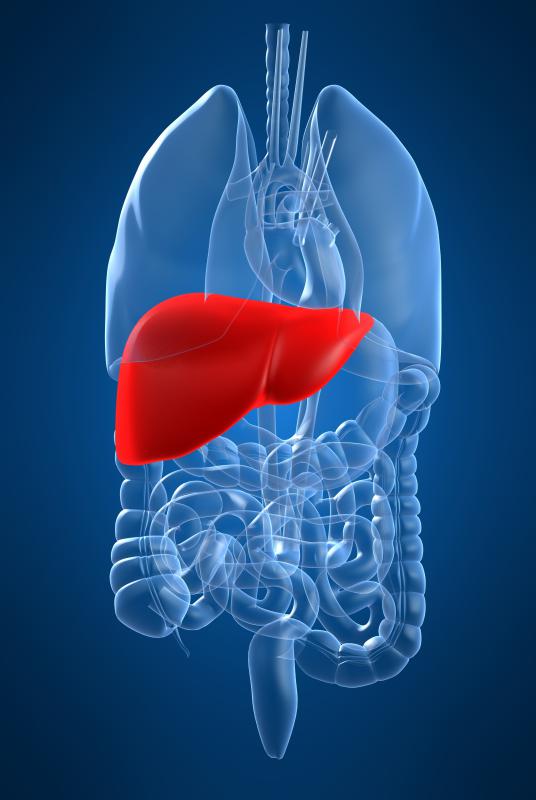At WiseGEEK, we're committed to delivering accurate, trustworthy information. Our expert-authored content is rigorously fact-checked and sourced from credible authorities. Discover how we uphold the highest standards in providing you with reliable knowledge.
What Are the Different Liver Cancer Stages?
There are four main liver cancer stages, depending on the size of the tumor and how far the cancer has spread. Stage 1 liver cancer is the least severe, while Stage 4 means the cancer has spread throughout the body, including to other organs. Doctors use this classification system to work out which type of treatment is most likely to be effective. As with the measurements for other types of cancer, the higher liver cancer stages require more aggressive treatment.
With Stage 1 liver cancer, there is a single cancerous growth in the liver. Unlike in the higher liver cancer stages, the tumor hasn’t spread to other parts of the body and isn’t present in the blood or lymph nodes. Stage 1 liver tumors often can be removed by surgery, which involves the affected part of the liver being cut away. To be classified as a Stage 2 tumor, the growth must be smaller than 0.8 inch (2 cm).

Stage 2 liver cancer is more severe than Stage 1, but the cancer still has not spread to the lymph nodes or other areas of the body. In this stage, the tumor may have spread to blood vessels or there may be more than one small tumor. Unlike more severe liver cancer stages, there is still a chance of removing the tumor through surgery, although this depends on how large the tumor is and whether there are secondary small tumors. If there are multiple tumors, then they must be confined to one lobe of the liver to be classified as Stage 2 cancer.

There are three sub-groups of Stage 3 liver cancer. A Stage 3A liver tumor is larger than a Stage 2 tumor but has not spread to blood vessels or lymph nodes. Stage 3B tumors are more severe, and the cancer has entered blood vessels close to the liver but still has not spread around the body. If a person has a Stage 3C liver tumor, then the cancer has spread into the tissue around the liver but nowhere else in the body.
Of the four liver cancer stages, Stage 4 is the most severe. It is split into two subgroups — 4A and 4B. Stage 4A cancer means the cancer has spread into lymph nodes away from the liver. If a person has Stage 4B liver cancer, then the cancerous cells have spread to other organs away from the original tumor.
AS FEATURED ON:
AS FEATURED ON:












Discuss this Article
Post your comments